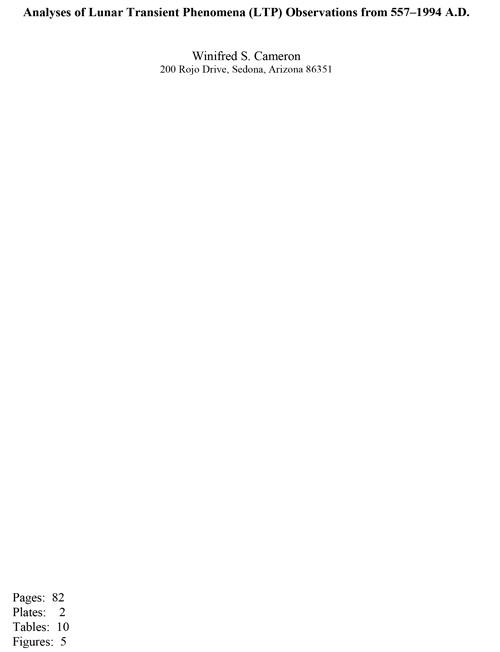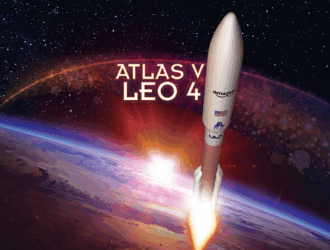
Literature and received reports of lunar transient phenomena (LTP) in lunar programs of observations provided a collection of 2254 total of observations, from 557-1994 A.D. with sufficient information for auxiliary data analysis. Among the 2254 there were 645 that were independently confirmed and/or permanently recorded in photographs, spectra, photometry, and polarimetry. These are designated by +. In study of these reports 448 were found that could not be explained by terrestrial atmospheric or instrumental effects, so are probably intrinsically lunar and are designated * and + for those confirmed or permanently recorded *+. Observations fell into five categories (Bright, Dark, Red, Blue and Gaseous). It was also found that about a dozen features provided >60% of all observations. Separate analyses were made with respect to the categories (which also included reports of normal appearance, designated negative) and features, with respect to four proposed hypotheses of causes. These were tidal, low–angle illumination, magnetic tail and solar flare particles that produced magnetic storms on Earth (and therefore reached the Moon). Both numbers and their percents were considered. Data are presented in tabular and graphical form. In the latter, it is easier to see behavior among the categories and among the features as to influences. The data are compared within boundary conditions for each hypothesis – whose periods are not commensurate, as they overlap at times. Overlaps were compared and showed that almost 70% of observations overlapped at least two hypotheses introducing confusion as to
dominating influence.
Analyzing by numbers, the tidal and low–angled illumination hypotheses were about equal in dominance. When ratios of observed to expected percents within boundaries were compared, which is a truer indication of influences, only one hypothesis (low–angl illumination) was dominant. Thus sunrise–sunset conditions render escaped gas or dust particles more visible because of the longer light path.
These results, coupled with the very low number of features reported (~200) amon the >30,000 visible in telescopes; reported with anomalies; their non–random distributio in contrast to the randomness of impact features; association with volcanic features (mar dark–floored craters, domes, and sinuous rilles), imply that the Moon is not totally inert, but degasses independently from external influences (as does the Earth). This is support by the detections of recent emanations, moonquakes, internal heat and compositional layers by instruments on the Moon and those on board during orbits of the moon.



